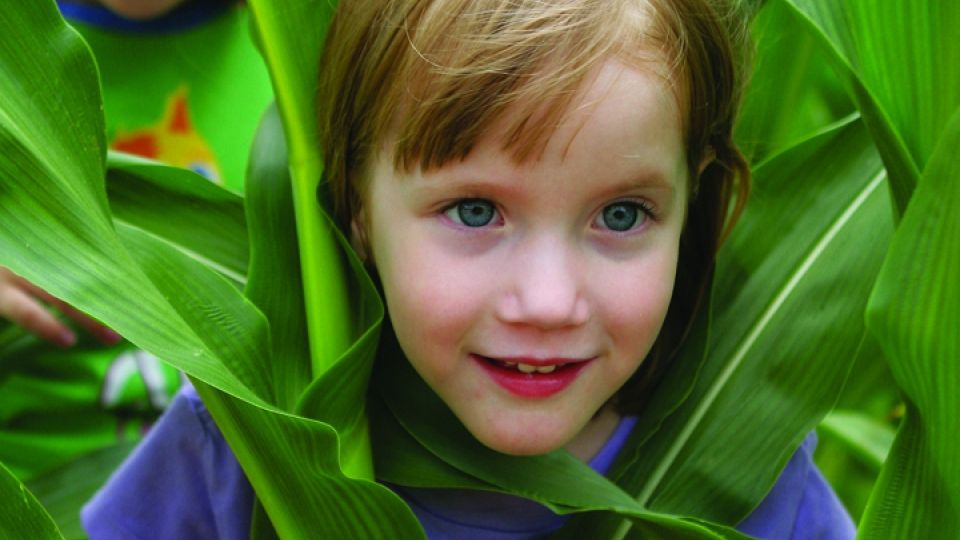
It’s the most telling evidence yet for eating organic food: our children have levels of pesticides and other toxic substances in their bodies that are so high that they can cause cancer, and they’re getting them from the food they eat.
Almost every child from the ages of two to seven years is likely to be contaminated by poisons such as arsenic, dieldrin, DDE and dioxins-and to levels that are way beyond the safety benchmarks for cancer, a shocking new study has discovered.1
Every single one of the 364 children tested had dangerous, cancer-causing levels of pesticides in their bodies-and they had come from eating a healthy diet of fruits, vegetables and salads. The foods laden with the most pesticides read like a roll-call for good healthy eating: tomatoes, peaches, apples, peppers, grapes, lettuce, broccoli, strawberries, spinach, dairy products, pears, green beans and celery.
In the immediate term, people should switch to eating organic fruits and vegetables, say researchers from the University of California at Davis. But ultimately, farmers need to move away from intensive farming methods that rely on pesticides.
The usual suspects are also increasing our children’s toxic load, the researchers found. Processed foods and snacks-and the way they are packaged-are adding the chemical compound acrylamide to the chemical brew in our children.
All the children exceeded the safety benchmarks for arsenic, dieldrin, DDE and dioxins, while 95 per cent of the children aged between two and four years had dangerous levels of acrylamide, and 10 per cent of the same group also had high levels of mercury, mainly from eating fish. Overall, the preschool group had higher levels of six of the 11 detected compounds compared with the older children.
Unsafe loads
But what does all this mean? The standard measure of ‘safe exposure’ to carcinogens is set by groups such as the US Environmental Protection Agency (EPA) and the Food and Drug Administration (FDA). A ‘safe’ level is usually one that would cause cancer in less than one out of every million people, but some scientists question how there can be any level that’s safe when it comes to carcinogens.
But the children tested had levels of arsenic and PCDDs/Fs, both of which are used in pesticides, that were 100 times greater than the safe benchmark. This would suggest that one in 10,000 children will develop cancer from the pesticides in the food they eat-but the true picture may be far worse as these safety levels are set for mature adults. The oldest children tested were seven years old, and the youngest carrying such high levels were just two years of age. Their bodies and brains are small and still developing, and are likely to be far less able to cope with such a toxic overload.
Five of the compounds tested have safety benchmarks for cancer and all were exceeded in these children.
But it isn’t just cancer that the children, and their parents, need to worry about.
If this were not alarming enough, the real concern is that the source of most of the toxic pollutants is the ‘healthy’ foods we all want our children to eat, ranging from fruits and vegetables to meat and fish.
These findings echo those of the US non-profit Environmental Working Group, which compiled a ‘dirty dozen’ list in 2012 after analyzing the pesticide content of commercially available fruits and vegetables.
In its latest findings, 98 per cent of the usual varieties of apples had pesticide residues and 78 different pesticides were found on lettuce, while the ‘dirtiest’ fruit were grapes, which had 64 different chemicals.2
Buying safe
It’s hardly practical, let alone sensible, to avoid all of these foods because of the possibility of contamination, so what should parents do?
The University of California at Davis researchers suggest several strategies for safer eating.
As EWG president Ken Cook said: “The explosive growth in market share for organic produce in recent years testifies to a simple fact that pesticide companies and the farmers who use their products just can’t seem to grasp: people don’t like to eat food contaminated by pesticides”.
With the alarming findings of the University of California at Davis team, it’s time that governments started to review intensive farming methods to find a better way to cultivate crops without poisoning our children.
Bryan Hubbard
Vol 23 no 10 January 2013
1. Environmental Health, 2012; 11: 83
2. www.ewg.org/release/ewg-releases-2012-sh
opper-s-guide-pesticides-produce
What do you think? Start a conversation over on the... WDDTY Community